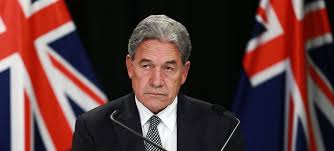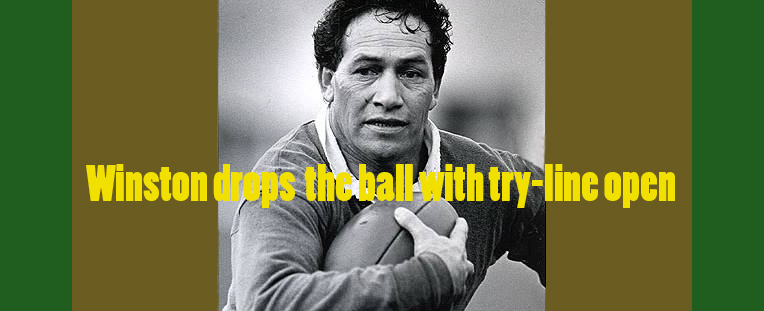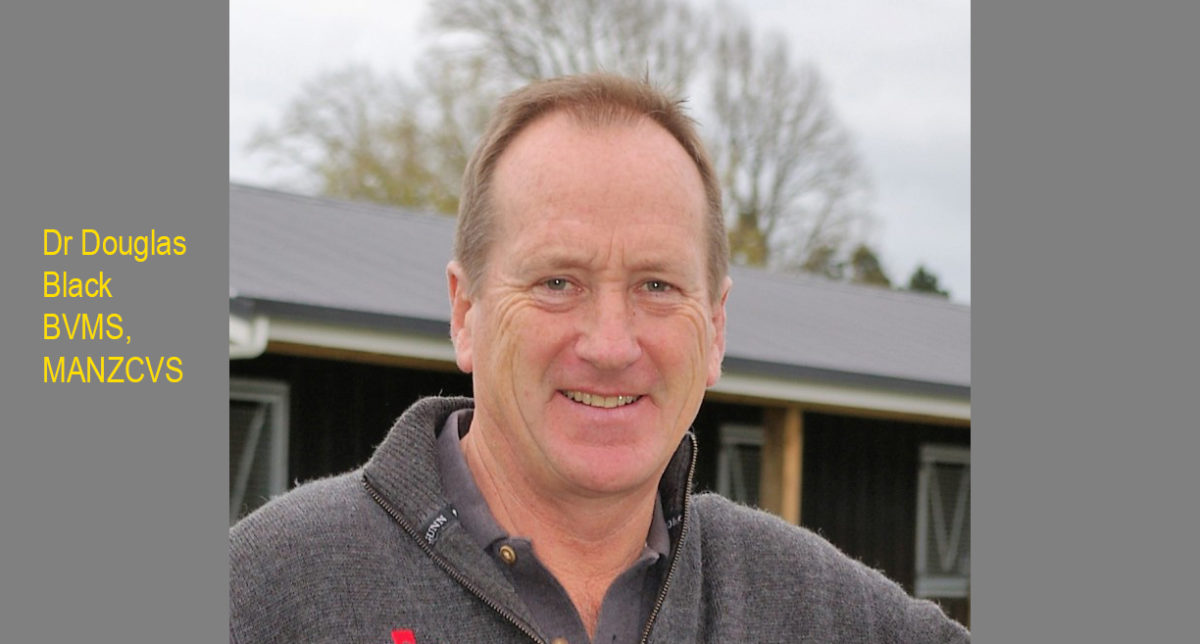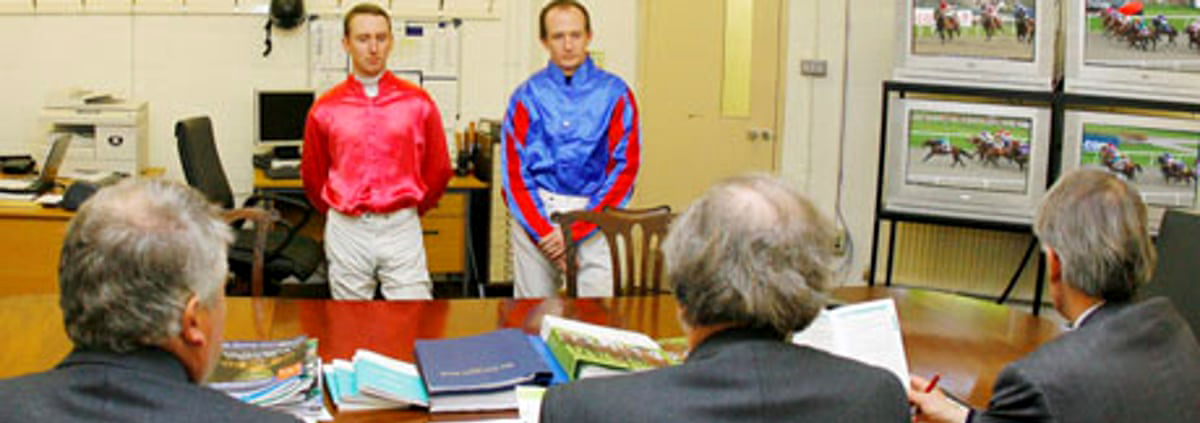by Brian de Lore
Published 27 December 2019
Someone phoned Newstalk ZB talkback radio earlier this month and said, “Don’t be fooled into believing the elected government is running this country; it’s the bureaucrats, the bosses of the 45,000-odd public servants in about 35 government departments – they are the people really in control.”
Numerous lunatics call talkback, but that remark resonated and is probably truer today than it’s ever been. Think about the control exerted by Treasury, the State Services Commission and Internal Affairs (DIA), and especially the DIA in racing’s case – evident with this latest legislation that will take us straight out of the frying pan and into the proverbial fire.
… this legislation does not reflect the gravity of the circumstances racing finds itself in today.
The very first thing to say about this legislation is that it does not reflect the gravity of the circumstances racing finds itself in today. It’s political rather than a fix-it document.
Then, the structure is nothing like the vision Messara had in his Review. On page six he said: “…the current structure and regulatory hierarchy do not lend themselves to the necessary level of code accountability or to sound decision-making and this can lend itself to unnecessary government involvement in the industry.”
The legislation currently provides far less devolution of power to the codes than the Messara Review recommended and far more government control, not less, that the Racing Act of 2003. Why would the authors want to give the Intellectual Property Rights to TAB NZ and not the codes – it’s the rightful property of the codes and morally belongs to the codes. To have the IP controlled by a government-appointed board will have serious long-term consequences for racing.
The excuse given to The Optimist for such a move was that overseas betting operators wanted to deal with only one body, not three. That’s a lame-duck excuse if ever one was made, and is unacceptable on all levels. Racing Victoria, for example, has successfully negotiated 47 separate contracts on their IP.
Worse still, the legislation is suggesting the Minister has sole discretion to make the TAB board appointments as opposed to the Messara Review which recommended a Minister appointed panel of three to appoint four of the seven appointees, with the remaining three board members coming from the Chairs of each of the codes or their delegates.
Are we not trying to get away from the system that gave us Nathan Guy, Glenda Hughes and John Allen, Minister?
Are we not trying to get away from the system that gave us Nathan Guy, Glenda Hughes and John Allen, Minister? The National Party threw racing under the bus with those three, and then Winston promised us reform and self-governance and racing voted for it – read the NZ First Racing Policy. But now the Minister is dishing out the same stuff disguised as new legislation – hypocrisy!.
The anti-racing codes theme in this legislation is even more blatant with its failure to finalise the formula for the distribution of funds – section 16 in the Racing Act of 2003. That very same Minister-appointed TAB board will decide after the regulation is written (not legislation but changeable regulation) on how the distribution is done, which gives no guarantee to any of the codes, or even if any the codes have board representatives.
The bottom line is that control of racing will rest more with the TAB than the codes. The door is now ajar for sport to get a second foot in it, and gain greater representation and put both hands out for a bigger share of the pie. The possibility of more sport board members than racing ones is very real and would be a decision in the hands of any future unknown Minister – that’s a bad joke when you consider sport has contributed nothing to the set-up or running costs of the TAB but is now infiltrating with the assistance of the DIA.
The Section-16 of the Act mentioned above has treated thoroughbred racing unfairly since 2003 when separate pools should have been established to give thoroughbreds it’s fair share of funding. Racing anticipated the Minister would correct that imbalance but instead, he’s opening the door for diminishing returns on percentage and control of our code by more non-racing people of the kind that have shafted the thoroughbred game over the past decade.
Completely ignored from the Review was Messara’s concept of a Racing NZ, a body of code representatives that would not be established as a separate administrative body but would act as a consultive forum for the codes to garner a cooperative understanding on all matters common to all three codes, and liaise with Wagering NZ on those matters.
Two-and-a-half years ago, Winston was saying he wanted racing to have self-determination
Two-and-a-half years ago, Winston was saying he wanted racing to have self-determination with legislation that would distance it from government and be safe from a disinterested racing minister’s claws in 30 years. He engaged Messara to write the Review, and the blueprint to achieve that goal was delivered in that review 18 months ago. Then he appointed MAC, which became RITA, firstly to advise and then to enact the Messara Review and transition it into legislation.
Littered through the last 25 years of racing are disinterested Ministers – another one is certain to be knocking on the door anytime soon. Racing should at all costs resist this legislation which on important issues gives the Minister carte blanche control. Rugby has become a mammoth betting medium but doesn’t have a Minister – why does racing even need one?
The plan may have worked if Minister Peters had, firstly, stayed interested and not handed over the management of racing to his political scientist Chief-of-Staff, and secondly, had kept John Messara involved in an overseeing role to ensure his Review was faithfully represented in the contents of all the legislation and enacted in the parts that required no legislation.
In retrospect, the failure of the Minister to follow up with Messara was a negative statement in itself. His approaching Messara and then accepting his offer to do it free-of-charge, receiving the Review in record time, and then cutting the umbilical cord without even a phone call of gratitude must be way outside the accepted protocols of a Minister of Foreign Affairs. Something else was going down.
Someone or some people have been in Minister Peter’s ear, it seems, and advised him poorly. Why else would Peters not ever have picked up the phone and spoken to Messara since, and even before the time Messara delivered his Review on July 31st, 2018. Not one word has verbally passed between them since; yes, a couple of emails only, but that’s all despite the Review having been completed on a pro bono basis in record time by the foremost experienced and successful racing administrator Australian racing has known.
If you sight an official press release saying they are following the Messara Review, it will be nothing more than the lip service racing has been getting for years. The claim may say 90 percent adoption of the Review but in reality, it’s only about 30 percent in its present form, and that 30 percent, which is described in the Bill’s explanatory note as ‘resolving historic property issues,’ is saying the closure of the designated clubs will have their assets transferred to the codes.
The TAB will still have far too much control and will be made up of Racing Minister appointees
Even if the clubs earmarked for the sword had previously been in support of the Messara Review for the overall good of the industry, which is doubtful in most cases, they would be furious now after reading the structural part of the legislation which is full of government control, ministerial intervention and is a step backwards from the Racing Act of 2003. The TAB will still have far too much control, will be made up of Racing Minister appointees, and in essence, that means nothing more than a continuation of the NZRB structure which has been a substantial cause of the decline that necessitated the Messara Review in the first place – Catch 22.
The Messara Review clearly outlined a goal to double prizemoney, and to go about achieving that aim it listed 17 key recommendations. Messara alluded to previous reviews that had been completed and shelved, going back to the Reid Committee in 1965. He said on Page 45, “…McCarthy Commission recommendations are as relevant today in 2018 as they were in 1970.”
The Minister himself blatted-on for a time about the owner being the most important person in racing, saying current prizemoney levels were unacceptable. The concept of doubling prizemoney may have appealed then, but the Minister has since gone missing on racing – how many race meetings did he attend in 2019, and passing on the racing portfolio to his office and no longer being available for comment has been to the detriment of this entire reform process.
No one seems to be talking about the goal anymore. It’s about the process only, which to date has only been a bit of tweaking here and there to sustain current prizemoney levels. No talk about partnering the TAB despite that non-legislation required process offering the single biggest financial windfall of all the Messara Review recommendations.
Could we have expected bureaucrats with no particular interest in racing to come up with legislation that was fit for purpose? The answer is a simple ‘NO’!
Could we have expected bureaucrats with no particular interest in racing to come up with legislation that was fit for purpose? The answer is a simple ‘NO’! It was never going to happen, and we may all have guessed that outcome? From a good source, one particular bureaucrat involved in the process has voiced his contempt for the Messara Review and also described partnering/outsourcing the TAB as a ridiculous idea – that someone has zero knowledge of the industry and its problems but carries more weight in this process than anyone involved with racing knowledge. That’s the irony and the downfall of the whole, damn tragic business.
Isn’t that the issue causing all this discontent? The total disconnect between the authors of the legislation and the racing industry itself – people with no conception of what it will take to fix racing’s problems empowered with writing the rules for it? A reliable source says RITA read the legislation for the first time only six days before we got it and immediately identified 50 plus issues in the narrative. What does that tell you?
Rumours abound the Minister will make a racing reappearance at Trentham on Wellington Cup Day. If you see him, then voice your concerns. This shoddy document isn’t legislation until it passes through Select Committee and goes on to a third reading and is again supported. Everyone in thoroughbred racing and the other two codes has a small window of opportunity to help stop it or get it changed – make it count and get your submissions in by February 11th.
Finally, be aware this is racing’s final chance for a positive correction. Racing is under siege from animal activists, anti-gambling lobbyists, left-wingers of every description, greedy sports organisations, the greenies, vegans, government departments and especially the DIA, a group called the Coalition for the protection of Racehorses, and a plethora of other internet-driven groups equally endowed in ignorance.
The protestants are gathering their troops and the Empire needs to strike back. In the immortal words of Obi Wan Kenobi, “May the force be with you, always.”
Shown below, some of the poor racing-code serving DIA written legislation:
61 Regulations for amounts of distribution to codes
(1)
The Governor-General may, by Order in Council made on the recommendation of the Minister, make regulations prescribing the method to be used for determining the amounts that may be distributed by TAB NZ to the racing codes from any surpluses referred to in section 69(2) or 74(2) or any other source, whether capital or income.
(2)
For the purposes of subsection (1), the amount must not be less than the total of the surpluses referred to in section 69(2) or 74(2) for that racing year less the total amount credited to reserves for that year from those surpluses.
Compare: 2003 No 3 s 16
62 Distribution to codes
TAB NZ may, during or as soon as practicable after the end of a racing year, pay to the racing codes the amount determined in accordance with regulations made under section 61 to be distributed among the codes for that year.
(3) Unless a majority of the racing codes otherwise agrees in writing, the amount referred to in subsection (1) must be distributed among the racing codes in the same proportions that the Board considers are the proportions to which the codes contributed to the New Zealand turnover of the Board for that racing year.
(4) In subsection (3), New Zealand turnover of the Board means the total gross amount received by the Board from racing betting placed in New Zealand on races run in New Zealand.
81 Protection of intellectual property rights
(1)
TAB NZ has exclusive rights within New Zealand and Australia to all intellectual property associated with all racing betting information, racing betting system (or systems), and any audio or visual content derived from a New Zealand race.
(2)
In subsection (1), intellectual property means all patents, designs, copyright, know-how, trade secrets, trademarks, service marks, and other intellectual or industrial property rights of any kind, and any rights in relation to them whether enforceable by Act or rule of law.




